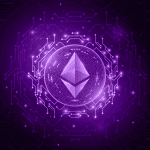
What is a Smart Contract in Blockchain and How Does it Work
A “smart contract” is a programme that runs on the Ethereum blockchain, and it is similar to a software application. An Ethereum smart contract is

Making a VR app required modifying the fundamentals of smartphone software. We had to scrap our prior experience developing 2-D mobile apps and begin again from scratch with this new system.
Virtual reality technology is related to a teleporter in that it transports users from their current location to a completely convincing computer-generated world. Even while it may seem like they’re traveling to new locations, people are staying in the same place. Because you are merely observing events as they occur, virtual reality does not alter your perception of the real world in any way.

In virtual reality, a stereoscopic 3D computer-generated environment is created to provide the impression of being physically present in a situation. By playing video games or using movie streaming services on the internet, we may immerse ourselves in a completely fabricated environment. On the computer, we create our simulated worlds. It’s always within reach thanks to our portable smartphones.
Making a successful virtual reality software calls for knowledge of a wide range of technology. Building a virtual reality app with a low-power-consumption architecture, high-performance, and error-free application code is a fundamental premise of app development. The use of prototype tools, development libraries, frameworks, and so on are all part of software and hardware design as well.
Before researching how to develop a VR app, decide its goals. This is the first stage in making a VR app. Define clear app goals. It might be gaming, touring, or a stand-alone experience. Before answering queries like how to make a VR app, you must know what you want to produce. Without explicit criteria, the app won’t be precise. Consider what app users will expect and what you want them to experience. You must consider immersive and appealing features. You should also make your content available online and popular among VR fans through social media. You must develop an interface that can retain people and produce deeper engagements. Provide an in-depth guide with explainers, video lessons, etc.

A “smart contract” is a programme that runs on the Ethereum blockchain, and it is similar to a software application. An Ethereum smart contract is

Blockchain is one technology that is supposed to bring the internet into a revolution. Fintech, medical, medicine, insurance, digital security, and SaaS organisations are all

A blockchain engine, Hyperledger Fabric is an open-source blockchain platform that addresses the most critical parts of blockchain research and deployment in commercial applications. Bitcoin,

Once you choose a platform, you can begin UI and code. What device your software runs on is important. App or VR headset? If mobile, Android, or iOS (or both)? Can your software work without Oculus or other VR providers? Each of these things will affect your pipeline, so you must plan.
The team behind an upcoming virtual reality software carefully maps out every little detail, from the locations of key locations and landmarks to the layouts of individual characters’ homes and workplaces and the optimal placement of loot. Here, users have the option of making a physical prototype by “cutting out” sections of 3D models from drawings. Manually, or with the aid of a tablet or mouse, 3D artists have a few options. The decisions taken at this step have lasting consequences for the app, therefore it’s important to think this through carefully.
Making a virtual reality app is distinct from making a regular mobile app. Because of the small size of a mobile device’s screen, a mobile app is optimized for use with one hand. You are developing a screen-based, two-dimensional setting.
Once your app is finished. Despite your many tests and trial runs, be ready for anything. Your app shouldn’t be one-and-done; it should evolve. Start collecting user input and integrating it into future app updates; just as you learn from user testers before launch, your wider audience after release will be your most significant critics and help improve your app. Analyze data to determine which characteristics are popular. What’s popular? Content structure impacts user adoption KPIs. Update the app’s description.
You could have global users. Plan for a solid hosting service to avoid latency. Use a CDN (CDN).
You should protect your VR assets.
Good VR apps contain 360-degree video, interactive gaming components, and 3D object modeling.
Users should have the option of downloading content and watching an adaptive stream.
To develop your business, you need analytics.
The app should play monoscopic and stereoscopic 360-degree videos.
Users should be able to download and stream material.
The app should be able to run on more than one platform.
These three stages are usual in the process of developing virtual reality content.
Stage 1: Create an outline and aim, then a learning flowchart. Instructional designers and L&D teams build a flowchart that outlines the processes learners will encounter and how visual components will create a simulated environment.
Stage 2: Build learning assets. 3D modeling, 2D graphics, video components, and voiceover are included. This stage involves creating learning-focused assets.
Stage 3: Developers create bespoke programs and author playable content. Developing C# scripts for interactions is the final stage in generating VR content. So, the project is playable on the platform (VR headset, computer, web, etc.).
These three phases might be created internally or outside. The primary distinctions are that you save time and have access to expert knowledge.